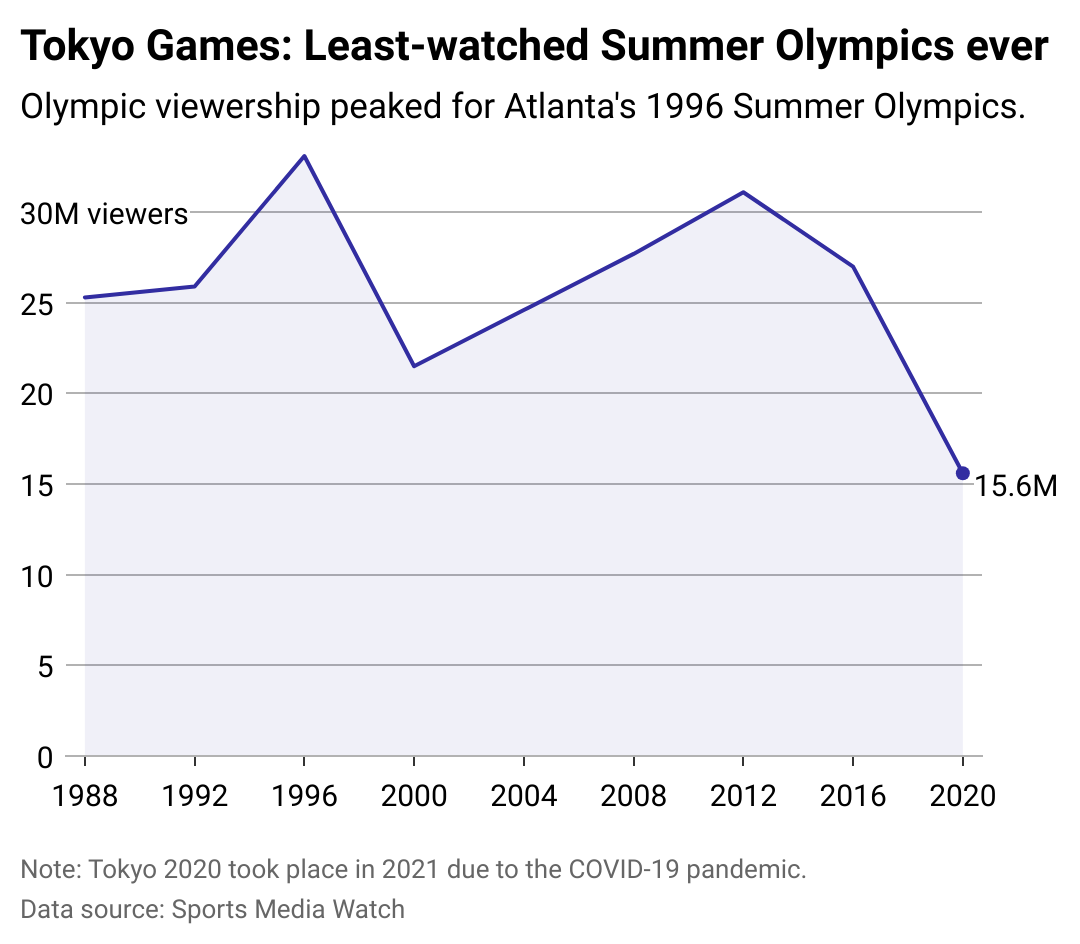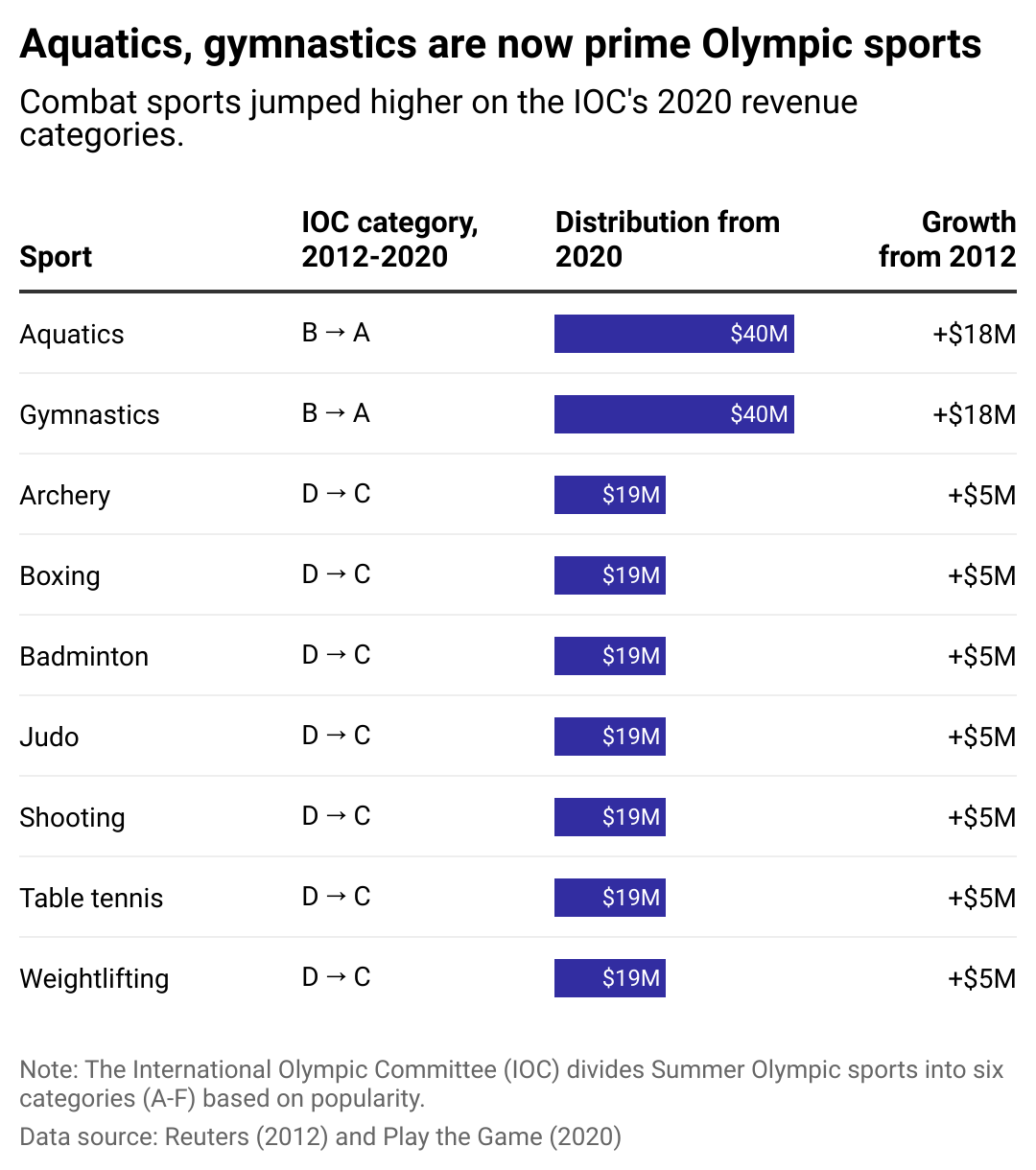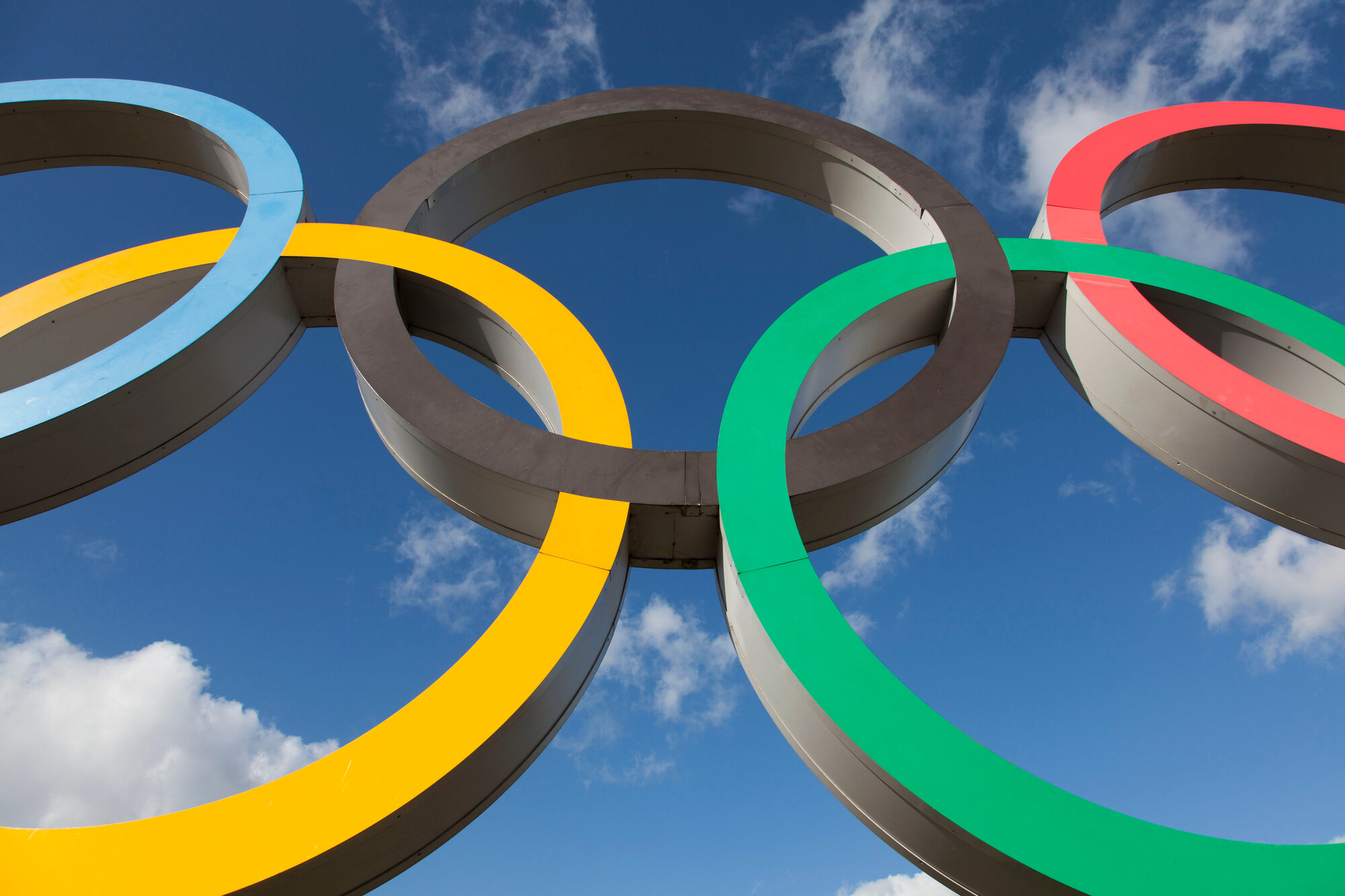The last time the Summer Olympics were held in the United States, a record television audience tuned in. It has not been matched since.
Which Olympic sports have had the biggest rise in popularity?
The 18-day event in Atlanta benefited from incredible showings by the Magnificent Seven, the Kerri Strug-led American gymnasts who won the country's first gold in the team event; Michael Johnson, who donned golden spikes to race to an unprecedented double in the 200- and 400-meter dashes; and Amy Van Dyken, the first American woman to win four swimming golds in one Games. This, and other spectacular stories, drew an average primetime gathering of 33.1 million people.
Since then, the Olympics have been held in far-flung locales at a time when audiences have found myriad other ways to get updates on these global sporting events. The 2012 London Games—the closest to the States by distance and culture in the last 28 years—earned 31.1 million viewers, but television isn't what it used to be even then. Viewership habits continue to change as entertainment options proliferate.
On the cusp of the 2024 Paris Games, Stacker mapped the Olympic sports with the biggest rise in popularity using data from Reuters, Sports Media Watch, and Play the Game.
You may also like: From content creation to companionship, here's how people say they hope to use AI

Stacker
Summer Olympics viewership declining since 2012
When the COVID-19 pandemic-delayed 2020 Olympics were held in Tokyo, the American viewing audience was at a record low, but just because TVs were off when the Games were on doesn't mean people weren't watching. Eyeballs have turned to computers and mobile devices; millions catch highlights and longer clips on YouTube and other platforms. Still, it marked a precipitous decline. Perhaps the combination of empty venues and a 13-hour time difference was too much to overcome.
Sports are the crown jewel of live TV. In many ways, they're all that's holding cable together, as Business Insider reported in February 2024. That's when Disney, Fox, and Warner Bros. Discovery announced they were joining forces to offer the ultimate sports streaming service, called Venu Sports. Soon, it seems, there won't be more than a few competitions left to watch on broadcast channels.
Will the Olympic Games be the last vestige of live sports? The National Football League might have something to say about that, but we could know in just four years' time when the Games are held in Los Angeles for the third time. This is the audience that will carry Olympic viewership into the future. As their platform preferences change so too will sporting predilections.

Stacker
9 summer sports grew in popularity since 2012
The International Olympic Committee finances the Games in part through the sale of broadcast rights, which accounts for more than 60% of its income, according to the Associated Press. To ensure the Olympics is serving up the competitions audiences want to see the most, the IOC categorizes each sport according to popularity and ranks it A through F. Rankings are based on television viewership figures, weighted at 40%; internet popularity, at 20%; public surveys, at 15%; ticket requests and press coverage, both at 10%; and the number of national federations, at 5%, according to Topend Sports Network. These categories determine the share of Olympic revenue received by each sport.
Despite the declining trend in U.S. broadcast viewership, billions of people around the globe are tuning in through television, websites, and social media apps. So, there have been some trendy changes, as the international federations of nine sports received more revenue from the 2020 Tokyo Games than they did from the 2012 London Games.
Aquatics (swimming, diving, artistic swimming, marathon swimming, and water polo) and gymnastics (artistic gymnastics, rhythmic gymnastics, and trampoline) have joined athletics (track and field, marathon running, and race walking) at the cool kids' table.
That swimming made the leap into category A is unsurprising. Swimming is astoundingly popular in the U.S. with about 1 in 4 adults including it in their regular exercise routines. Michael Phelps' legendary career achievements and the sport's easy mechanics have only helped burnish its shine with viewers. Similarly, superstar Simone Biles and co. surely account for some of that boost in gymnastics, but National Geographic argues that the sport's popularity is rooted in ancient Greece and 18th-century Europe. The nationalism-fueled rise was highlighted by Cold War tensions, when the U.S. and U.S.S.R. used their performances on the world stage to score symbolic victories of one ideology over another.
Among the IOC's category C sports, here's betting that badminton and table tennis climb into the B category sooner than later. They're both hugely popular in Asia, and the former is growing legs in the U.S. The back-and-forth action combined with the chance for every viewer to try to replicate Olympic heroics in their own backyard or basement is a recipe for skyrocketing success. Perhaps pickleball could be next?
Story editing by Carren Jao. Copy editing by Paris Close. Photo selection by Clarese Moller.
More Articles to Read

